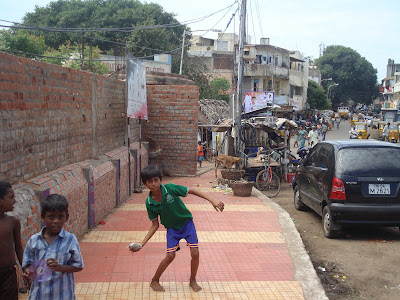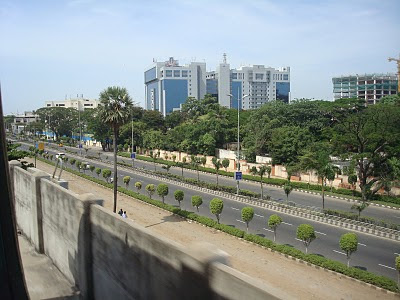It seems to be generally accepted that the first Parsis arrived in Madras sometime in 1795 and that they decided to stay on because the city afforded them many opportunities to turn their hand to business. In any case, Madras of the late 18th century was probably a melting pot of various nationalities and ethnic groups and so the Parsis would not have felt out of place in this great city. For a very long time, however, the Parsis did not have any formal place of worship; the major reason for this seems to be the inablity to find a priest who would settle in Madras. The Dar-e-Meher, or Fire Temple, houses the undying sacred flame that must be stoked five times a day by a priest. Without a priest, there seemed little point in building a temple.
The first permanent priest arrived in 1906. But the Dar-e-Meher itself took a while longer to come up. Parsi fire temples are of varied categories, graded by the sanctity of the fire within. The highest grade, the Atash Behram (Fire of Victory) is built by collecting fires from 16 different sources (caused by lightning, from a cremation, from furnaces operated for trade, from household hearths, and so on) and requires 32 priests to perform all the ceremonies involved in its consecration, which could take over a year to complete. At the other end is the Atash Dadgah, which could even be a lamp or a hearth over which the Yasna liturgy has been recited.
The Jal Phiroj Clubwala Dar-E-Meher is classified as an Atash Adaran (Fire of Fires), which is a combination of fires from four different sources representing four different working groups: priests, soldiers / statesmen, farmers and artisans. Named after the young son of Phiroj Clubwala, a prominent (and philanthropic) Parsi of Madras, the temple is built on land donated by him, upon which the grieving family had had this temple, designed and built by Hormusji Nowroji (another prominent Parsi of Madras) consecrated on August 7, 1910. Over the years, the monument has been the centre of their faith for the Parsis of Chennai and over the past week, they have come out strong in celebrating the centenary of the temple where the fire has been burning continuously for a hundred years, now!





























